|
|
Snohomish County Executive Dave Somers and Health Officer Dr. Chris Spitters provided updates Tuesday on the community’s response to COVID-19.
Executive Somers said the county and its partners continue to focus on safely and quickly administering COVID-19 vaccinations to as many people as possible.
“The supply is still not meeting our capacity to deliver it into arms,” Somers said, “but we are optimistic that the federal government will increase the amount coming to the state and we should begin to have an impact and we are seeing a slow increase but we also are managing to make sure that people who need second doses will be able to get second doses. It is a bit of a juggling act but things are improving slowly.”
Efforts also are underway to ensure that vaccine is available to people from Black, Indigenous, Latinx and other communities that have been disproportionately hit by COVID and who also often face challenges in obtaining health care. Somers said the work builds on outreach and connections made with people in those communities during last year’s Census efforts.
Dr. Spitters said that the Snohomish County Vaccine Taskforce sites are following the state’s lead and focusing much of the attention on making sure people who received their first COVID vaccine dose now can receive their second.
“It looks like the allocation from the state for this week is 5,000 first doses and 18,500 second doses,” Dr. Spitters said. “So consistent with the state Department of Health’s messaging and strategy, this week is mostly about getting second doses in for folks with limited availability this week.”
Spitters also discussed data about COVID-19 in the state’s schools and new guidance from the Centers for Disease Control and Prevention on wearing face masks. He demonstrated how to double mask, consistent with the new guidance.
He also discussed the challenges presented by emerging, more infectious strains of the COVID virus. Wearing masks, washing hands and practicing social distancing all are strategies that can curb infection.
“That's really our call to action for the community, is to continue to do that, to buy time while we roll out the vaccine,” Dr. Spitters said.
Watch the briefing: https://youtu.be/nttV2zkDNkw
Or read the transcript: https://www.snohd.org/DocumentCenter/View/6583/Media-Availability-021621
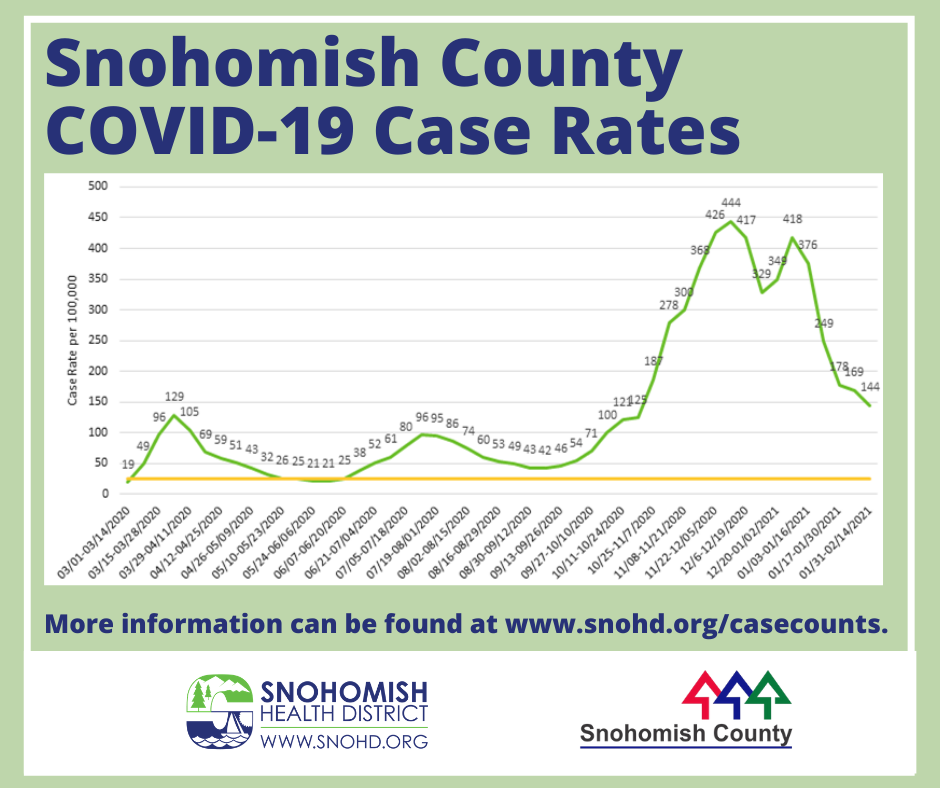
|
|
|
Data released Tuesday by the Snohomish Health District show that more than 18,000 people have now received a second dose of COVID vaccine, making them fully vaccinated. Meanwhile, nearly 77,000 first doses have been administered.
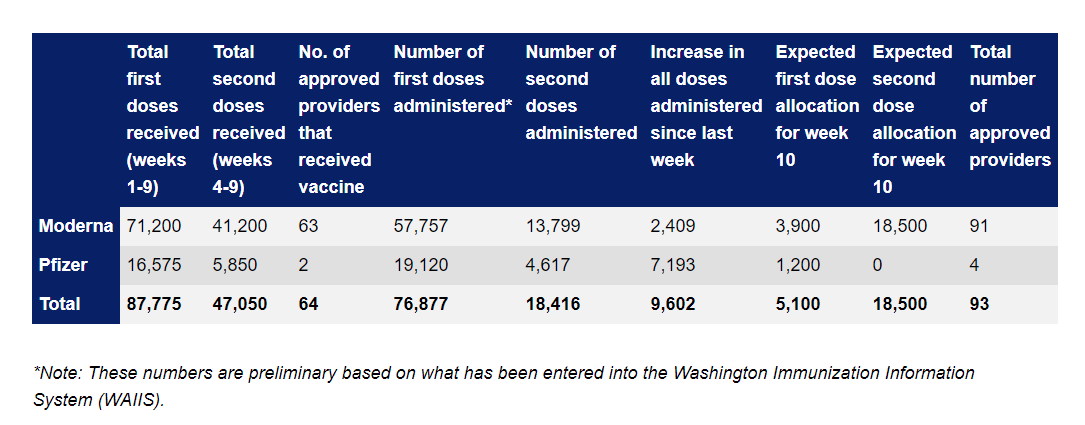
|
|
|
Kids can help protect others against the spread of COVID, too! Watch this video for some hints on how to get children on board with wearing a mask.
Facebook
Twitter
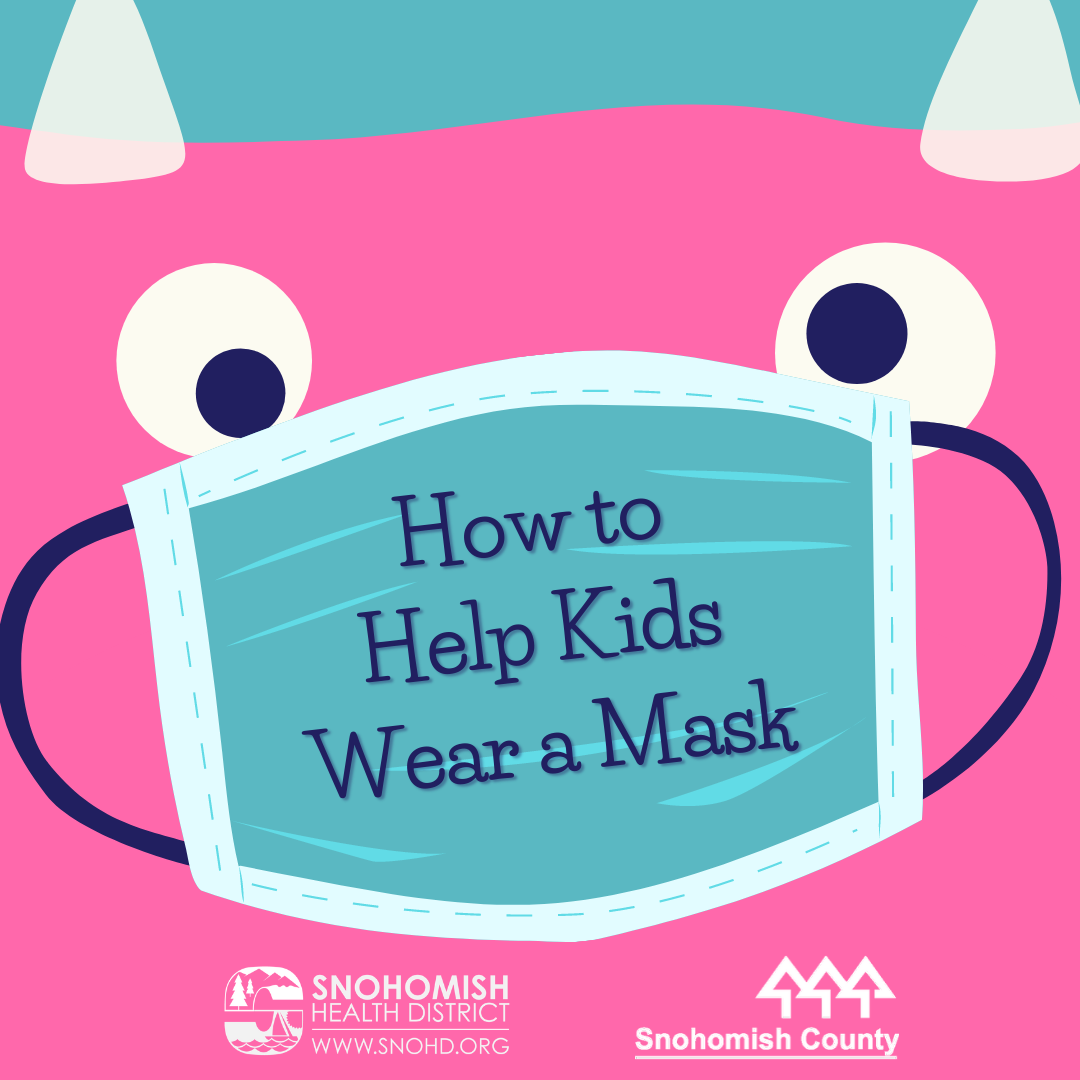
|
|
|
The City of Marysville is accepting grant applications to fund public service activities that prepare, prevent and respond to the spread of infectious disease such as COVID-19. The deadline to apply is 4 p.m. March 1.
The city will award up to a total of $180,443 for eligible activities that:
- Support new businesses or business expansion to create jobs and manufacture medical supplies necessary to respond to infectious disease;
- Carry out job training to expand the pool of healthcare workers and techs to treat disease within the community;
- Provide testing, diagnosis, or other services at a fixed or mobile location;
- Provide equipment, supplies, and materials necessary to carry out a public service;
- Deliver meals on wheels to quarantined individuals or individuals who need to maintain social distancing due to medical vulnerabilities (must be a quantifiable increase to services currently being provided); or
- One-time emergency rental/mortgage assistance, for a period not exceeding three months, to those experiencing loss of income/inability to pay rent or mortgage due to COVID-19.
More information.
|
|
|
Spurred by the COVID pandemic restrictions, the City is moving to a paperless permitting system called the “Snohomish Self-Service Permit Portal”. Once implemented all development permits will have to be submitted through the online portal – paper applications, plans, and reports will no longer be accepted.
The new system will provide for a quicker and more efficient review of applications. No appointments will be necessary to submit an application, and since the portal will be available 24 hours a day seven days a week, it could not be more convenient.
Applicants will no longer have to print out bulky plans or lengthy reports and haul them in to City Hall for submittal. Instead, they will submit digital versions of everything. Fee payments can be made online using a credit card. Even the inspection process will be improved, as they can be scheduled through the portal and inspectors will email inspection reports immediately from the field.
See the full press release for more information.

|
|
|
Young adults between the ages of 18 and 25 years face many challenges due to the COVID-19 pandemic. They may not have entered the workforce, finished school or college, be in a relationship with a significant other, or started a family. Young adults also may feel robbed of important turning points in their lives that they imagined or planned on achieving before the pandemic. Some have spent a lot of time practicing, studying, or waiting, only to have sports competitions, performances, or graduations cancelled or postponed. Others have had to change their wedding plans, are starting or raising a family, or are struggling to keep a job. Additionally, plans for jobs or further education might seem out of reach due to new social and financial challenges.
The state Department of Health has prepared guides for parents and mentors who want to help:
English
Spanish
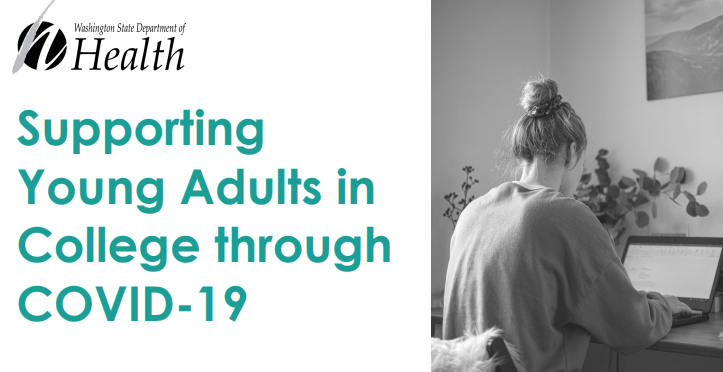
|
|

Appointments to get a first dose of COVID-19 vaccine likely will be even tougher to get this week as the state Department of Health focuses on second doses.
DOH says it will prioritize state and local mobile vaccination teams for long term care facilities and adult family homes; mass vaccination sites in Snohomish, King, Pierce and Spokane counties; and other sites throughout the state that address equity.
Providers requested about 170,000 second doses for the week. The state’s allocation was 92,325 second doses. The difference is likely due to the fact that some providers in Washington used doses of vaccine that were intended to complete the two dose vaccine series as the initial dose when vaccinating community members earlier in January. Unfortunately, this now means that a portion of next week’s available first doses will need to be used to complete the series for these people. This focus on second dose administration is anticipated to be for this coming week and is anticipated to be less so for upcoming weeks.
See the full press release for more information.
|
|
|
|
The state Department of Health announced Sunday that a hospital in the South Central Region of the Healthy Washington Plan misreported data which led to a determination that the region remain in Phase 1 of Governor Jay Inslee’s Roadmap to Recovery phased reopening plan. When the region did not move to Phase 2, it was brought to the state’s attention that a hospital in the region appeared to be incorrectly reporting its hospital admission data. Using updated information, the hospital admission metric for the South Central region was re-calculated and the state concluded the region did meet the required metric criteria. The region immediately advanced to Phase 2.
See the full press release for more information.
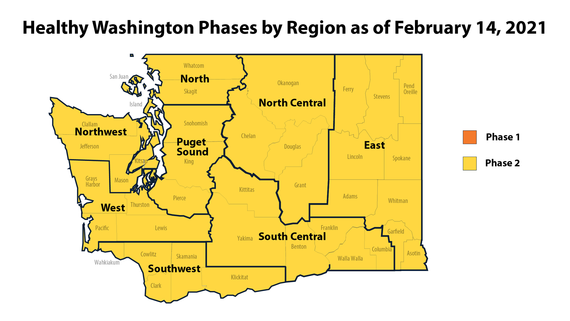
|
|
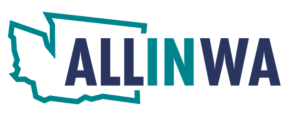
The All In WA COVID-19 Relief campaign and community partners across the state on Monday launched the All In WA Vaccine Equity Initiative in response to inequitable vaccine distribution among communities disproportionately impacted by COVID-19.
The Initiative targets and streamlines funds to trusted and known, community-based organizations who can conduct linguistically and culturally-specific vaccine education and outreach, as well as safely facilitate mobile and pop-up vaccine clinics for those who want to get vaccinated.
The Initiative aims to raise $15 million to match government dollars allocated to vaccine outreach and education – totaling $30million of combined private and public investment. The Initiative has support from key philanthropic partners, including The Starbucks Foundation and Premera Blue Cross.
Data show the pandemic has disproportionately impacted Black, Indigenous, and People of Color (BIPOC), immigrants, refugees, and rural and remote residents – yet they are significantly under-vaccinated. This is confirmed by new data released by the state Department of Health showing low percentages of Hispanic, Black and Multiracial people have received COVID-19 vaccine when compared to those group’s proportion of the state population.
“The pandemic has intensified long-existing inequities that threaten countless families. Access to vaccines must help close that gap, not widen it,” said Jesus Hernandez, CEO, Family Health Centers in Okanogan County. “We also cannot ignore that BIPOC communities have faced a painful history of systemic racism in our public health and medical systems. This is why the All In WA Vaccine Equity Initiative directs support to trusted and known organizations who are located in heavily impacted communities and are most familiar with their needs and concerns. They are best equipped to help communities recover by disseminating critical vaccine information and expanding safe vaccine access to community members who need and want them.”
The grant funds will be administered by the All In WA Advisory Group and are flexible. Funding will be distributed to organizations based on regions and communities with the highest need.
“Vaccine access is critical to making sure our state recovers from this crisis,” said Gov. Jay Inslee said. “The All In WA Vaccine Equity Initiative ensures that our hardest-hit communities have the information and resources they need to get vaccinated.”
Due to difficulties accessing accurate information, online registration, and appointments as a result of language, digital, and mobility barriers, existing inequities are widening every day – compromising the health of vulnerable families and elderly residents. The funds will aid vaccine registration and help provide transportation assistance so those who want to be vaccinated can get access. Funds will also expand community organization staffing and outreach capacity, fund translated materials and phone and text banking to reach historically and currently underserved communities.
See the full press release for more information.
|
|
|
|
Todos queremos mantener seguros a nuestros seres queridos y ayudar a detener la propagación del COVID-19. Una de las mejores formas de hacerlo es asegurarnos de aislarnos o ponernos en cuarentena durante el tiempo recomendado
Leer más.
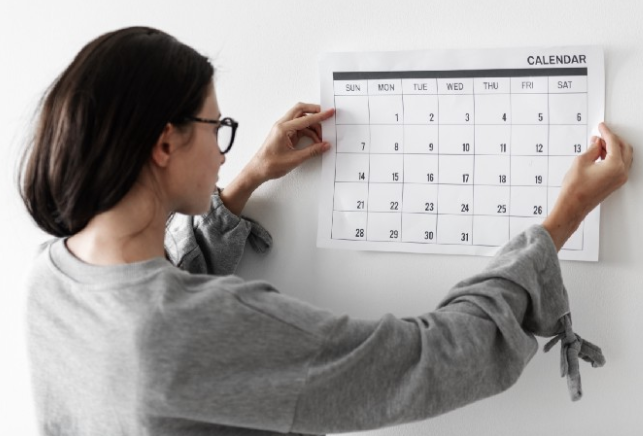
|
|
|
El Departamento de Salud del Estado de Washington (DOH, por su sigla en inglés) publicó un nuevo informe de datos (solo en inglés), que revela que bajos porcentajes de personas hispanas, negras y multirraciales recibieron la vacuna contra la COVID-19 en comparación con la proporción que representan esos grupos en la población del estado.
El informe presenta datos sobre la raza y etnicidad de las personas que recibieron, por lo menos, una dosis de la vacuna y de las personas que recibieron las dos dosis, con desgloses para todas las edades y para las personas de 65 años o más. También incluye el porcentaje de personas vacunadas por grupo de edad en todas las razas/etnicidades.
Las conclusiones del informe son las siguientes:
- El porcentaje de personas vacunadas que son hispanas (4.7% de las que recibieron, como mínimo, una sola dosis; 5.9% de las que recibieron las dos dosis) es menor que la representación de personas hispanas en la población del estado (13.2%).
- El porcentaje de personas vacunadas que son negras (2.2% de las que recibieron, como mínimo, una sola dosis; 2.7% de las que recibieron las dos dosis) es menor que la representación de personas negras en la población del estado (3.9%).
- Los grupos multirraciales también están subrepresentados en comparación con la población total del estado, tanto entre las personas que recibieron, como mínimo, una sola dosis de la vacuna como entre quienes recibieron las dos dosis.
- Las personas de origen indoamericano o nativas de Alaska constituyen una proporción apenas más grande de personas vacunadas en comparación con su representación en la población, tanto entre las personas que recibieron, como mínimo, una sola dosis como entre quienes recibieron las dos dosis.
“Estos datos son fundamentales para comprender cómo debemos equilibrar la necesidad de vacunar a la mayor cantidad de residentes de Washington, tan rápido como sea posible, y, al mismo tiempo, fomentar la equidad en el proceso”, explicó Umair A. Shah, MD, MPH, secretario de Salud. “Aunque nos hemos concentrado en ambos aspectos a lo largo del proceso, debemos esforzarnos más por enfrentar estas inequidades vinculadas con la vacuna contra la COVID-19 y los obstáculos para el acceso que implican”
Más información
|
|
|
The Centers for Disease Control regularly publishes research on COVID-19 – some studies peer reviewed, others not. Among the recent offerings is research that explores how wastewater sampling may allow early detection of community COVID activity.
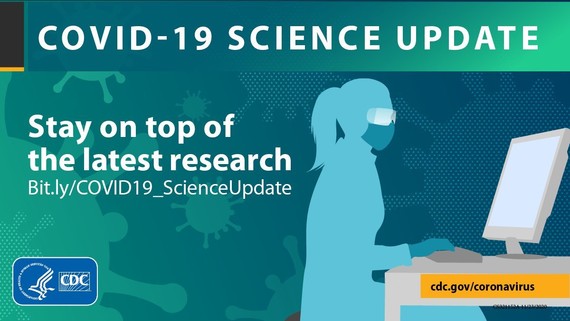
|
|

The U.S. Small Business Administration on Friday reached a milestone in the success of the COVID-19 Economic Injury Disaster Loan (EIDL) program, which has provided U.S. small businesses, nonprofits, and agricultural businesses a total of $200 billion in emergency funding.
“Following the enactment of COVID-19 emergency legislation, the SBA has now provided more than 3.7 million small businesses employing more than 20 million people with $200 billion through the unprecedented COVID-19 EIDL loan program,” Acting Administrator Tami Perriello said. “SBA remains committed to helping small businesses recover from the unprecedented economic effects of COVID-19.”
SBA is still accepting COVID-19 EIDL loan applications as the deadline to apply has been extended to Dec. 31, 2021. EIDL funding is used to pay fixed debts, payroll and expenses, accounts payable and other bills that can’t be paid because of the disaster’s impact. This financial resource has allowed millions of small business owners across America to retain employees.
|
|
|
|
A Centers for Disease Control and Prevention study published earlier this month suggests the pandemic has changed the frequency of hospital emergency department visits for mental health, suicide attempts, overdose, and violence.
This cross-sectional study of almost 190 million emergency department visits found that visit rates for mental health conditions, suicide attempts, all drug and opioid overdoses, intimate partner violence, and child abuse and neglect were higher in mid-March through October 2020, during the COVID-19 pandemic, compared
These findings suggest that emergency department use and priorities for care seeking shifted during the COVID-19 pandemic, underscoring mental health, substance use, and violence risk screening and prevention needs during public health crises.
Read the full study for more information.
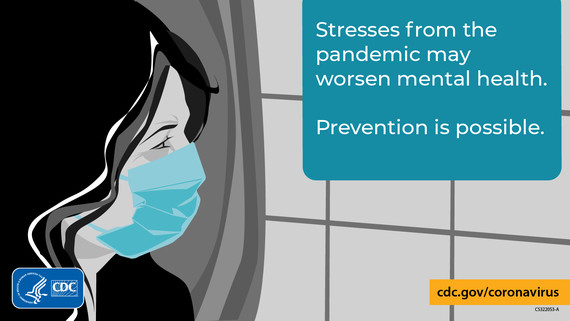
|
|
|
Cumulative from Jan. 2020 through Feb. 16, 2021
|
|
|
ESSENTIAL LINKS AND PHONE NUMBERS FOR UP-TO-DATE INFORMATION
|
|
|
|
|